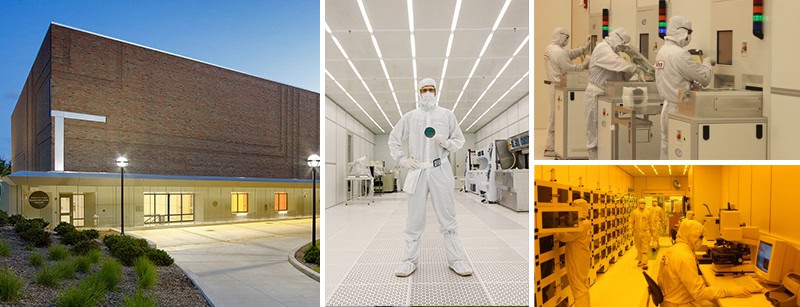FARMINGTON — Scientists at the University of Connecticut have made a remarkable breakthrough in the quest for longer, healthier lives. In a major study, the researchers successfully extended both lifespan and healthspan in mice by targeting specific cells in their bodies. This exciting development brings us closer to the dream of not just adding years to life, but life to years.
The study, published in Cell Metabolism, focuses on cells that highly express a protein called p21. These “p21-high” cells accumulate in various tissues as we age and appear to contribute to age-related decline. By periodically eliminating these cells in mice, the scientists were able to extend the animals’ lives by an average of 9%. That’s equivalent to about seven human years. More importantly, the mice remained healthier and more physically capable throughout their extended lives.
The finding addresses a critical challenge in aging science: how to increase lifespan while simultaneously improving quality of life. Currently, there’s often a gap between how long people live and how long they live in good health. In some countries, life expectancy is increasing faster than healthspan, meaning people are living longer but spending more time in poor health.
Targeting p21-high cells in mice
What makes this study particularly noteworthy is the comprehensive way the researchers assessed the mice’s health. Instead of just measuring lifespan or looking at health at a single point in time, they tracked the mice’s physical function monthly until natural death. This allowed them to show that the treatment improved health throughout the entire remaining lifespan, not just temporarily.
To achieve these remarkable results, the researchers employed an innovative approach. They used genetically modified mice that allowed them to specifically target and eliminate the p21-high cells. These mice were designed with a genetic switch that, when activated, would cause p21-high cells to self-destruct. The scientists began their intervention when the mice were 20 months old, equivalent to about 60-65 human years.
Once a month, the researchers administered a drug called tamoxifen to the mice. In the treated mice, this drug activated the genetic switch, causing the p21-high cells to die off. Control mice received the same drug but lacked the genetic switch, so their p21-high cells remained intact.
Fountain of youth effect
The treated mice showed better grip strength, faster walking speeds, and lower frailty scores compared to untreated mice. They also had improved heart function, better glucose tolerance and insulin sensitivity, and healthier livers. All of these benefits persisted even into the final months of life, suggesting a true extension of healthspan.
Interestingly, the treatment didn’t seem to prevent any specific diseases. Instead, it appeared to slow down the overall aging process, leading to better health across multiple body systems. This aligns with the idea that targeting fundamental aging processes could be more effective than trying to treat individual age-related diseases one by one.
But the benefits didn’t stop there. The treated mice also showed improvements in several key areas of health:
- Better heart function: Echocardiograms revealed that the treated mice had stronger, more efficient hearts.
- Improved metabolism: The mice showed better glucose tolerance and insulin sensitivity, indicating healthier metabolism and potentially reduced risk of diabetes.
- Healthier livers: Blood tests showed lower levels of enzymes associated with liver damage in the treated mice.
Importantly, these health benefits persisted even into the final months of life, suggesting a true extension of health span – the period of life spent in good health.
The researchers believe their approach works by reducing chronic, low-grade inflammation associated with aging. The p21-high cells seem to produce inflammatory signals that can spread and amplify inflammation throughout the body. By periodically eliminating these cells, the treatment may be reducing this harmful inflammation.
Improving healthspan and lifespan in humans
If similar results could be achieved in humans, it could lead to a significant improvement in quality of life for older adults. Imagine being able to remain physically active, mentally sharp, and independent for years longer than is currently possible. The economic and social impacts would be enormous, potentially reducing healthcare costs and allowing people to contribute to society for longer.
“We are all very excited about this finding, because it demonstrates that we not only extend the lifespan, but indeed extend the life with good health in mice, which is a key goal for the aging field,” says Ming Xu, assistant professor of the UConn Center on Aging and the Department of Genetics & Genome Sciences at UConn, in a statement.
Of course, we’re still a long way from achieving this in humans. But this study provides an exciting new direction for anti-aging research and offers hope that we may one day be able to extend not just our lifespans, but our healthspans as well.
Paper Summary
Methodology
The researchers used genetically modified mice that allowed them to specifically target and eliminate p21-high cells. Starting when the mice were 20 months old (equivalent to about 60-65 human years), they gave them a drug called tamoxifen once a month. In the treated mice, this drug activated a genetic switch that caused p21-high cells to self-destruct. They then tracked the mice’s health and physical function monthly until they died naturally, comparing the treated mice to untreated controls.
Results
The treated mice lived about 9% longer on average, with some living up to 8% longer than the longest-lived control mice. Throughout their lives, they performed better on tests of grip strength and walking speed. They also scored lower on a “frailty index” that measures various signs of aging. Additionally, the treated mice showed better heart function, improved glucose metabolism, and healthier livers compared to untreated mice.
Limitations
This study was done in mice, and results in animals don’t always translate to humans. The genetic modifications used to target p21-high cells in this study aren’t possible in humans, so different methods would need to be developed for potential human treatments. The study also didn’t explore potential negative effects of eliminating these cells, which could be important for long-term safety.
Discussion and Takeaways
The researchers believe their approach works by reducing chronic, low-grade inflammation associated with aging. The p21-high cells seem to produce inflammatory signals that can spread and amplify inflammation throughout the body. By periodically eliminating these cells, the treatment may be reducing this harmful inflammation.
The study suggests that targeting fundamental aging processes could be more effective at promoting healthy aging than trying to treat individual age-related diseases. It also highlights the importance of assessing healthspan, not just lifespan, in aging research.
The researchers note that their approach seems to work differently from other anti-aging strategies that target different types of aged cells. This suggests there may be multiple types of problematic cells that contribute to aging in different ways.
Funding and Disclosures
The study was funded by various organizations including the Glenn Foundation for Medical Research, the National Institutes of Health, and others. Some of the researchers have a pending patent related to the mouse model used in the study, which could potentially lead to financial conflicts of interest if the technology is commercialized in the future.






